How Do Squirrels Get Into Attics? Everything You Need to Know
-
Pete Ortiz
- Last updated:
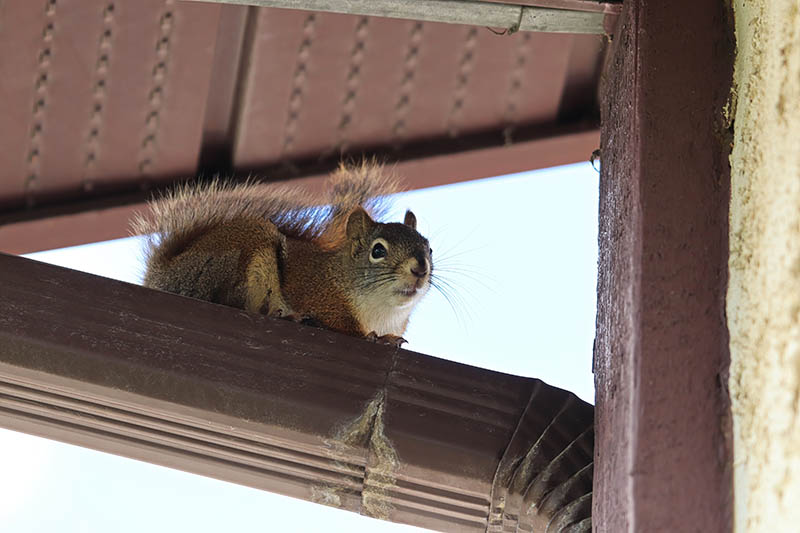
Have you ever heard scratching, skittering, or rolling noises emanating from your ceiling? If so, then chances are that you are playing host to a wild animal in your attic. The creaking noises would be from any number of sources, but usually, the sounds are produced by squirrels as they hoard food and build nests for winter.
Despite popular belief that squirrels can get into your house through cracks and holes, it is not always the case. They can access your ceiling through attics and chimneys by chewing through shingles, entering gaps, or through your siding. They do this in search of food and shelter, especially during winter. Since these pests can bring about problems like power outages and diseases, the moment you notice their presence in your home, you should act!
Read on to learn how squirrels get into the attic and how to detect them and get rid of them.
Squirrel Routes Into the Attic
As with most animals, finding a good nesting spot is vital to ensure the survival of their offspring, and squirrels are no exception. They will crawl into your ceiling or attic in search of a good nesting area. The other reason these small creatures might be attracted to your attic include; shelter from the cold, in search of a mate, or seeking safety from predators.
Whichever the motivation, what matters is how they got into your home in the first place and how to get rid of them. Often, squirrels gain access to your attic through wall vents, soffit intersections, and roof vents. They can also get into your attic through chimneys, gable vents, roof edges, and plumbing mats.
1. Soffit Intersections
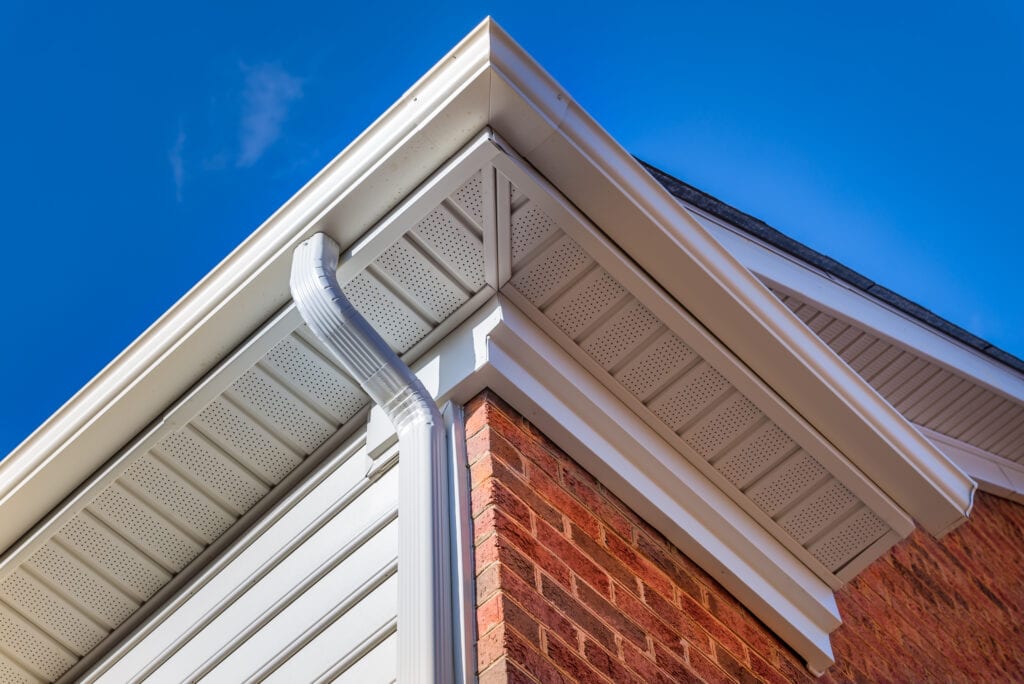
The roof soffit intersection is one of the most vulnerable entry points of your home. They provide a hidden entry point for pests and rodents. If you are unaware of what a soffit is, it is the horizontal part of your roof that protects the attic ventilation. Squirrels can sneak into your attic without you knowing and wreak untold havoc on your insulation and attic furniture.
2. Roof Vents

Roof vents serve to exhaust warm, humid air from inside the house to the outdoors. Squirrels tend to make a home in this section of your home due to the warmth being emitted. Since these rodents are mostly motivated by self-preservation, they will immediately seek out warm environments, especially during winter.
So, they will chew through almost any material to access the warmer parts of your attic. Sure, aluminum and plastic vent covers may deter the rodents, but they will not be enough to prevent a determined squirrel from getting into your home via the roof vent. Hence, you should carry out regular roof vent inspections to keep the squirrels out.
Consult a PEST-CONTROL expert
Find a pest-control specialist in your area, and get free, no-commitment estimates for your project.

3. Wall Vents
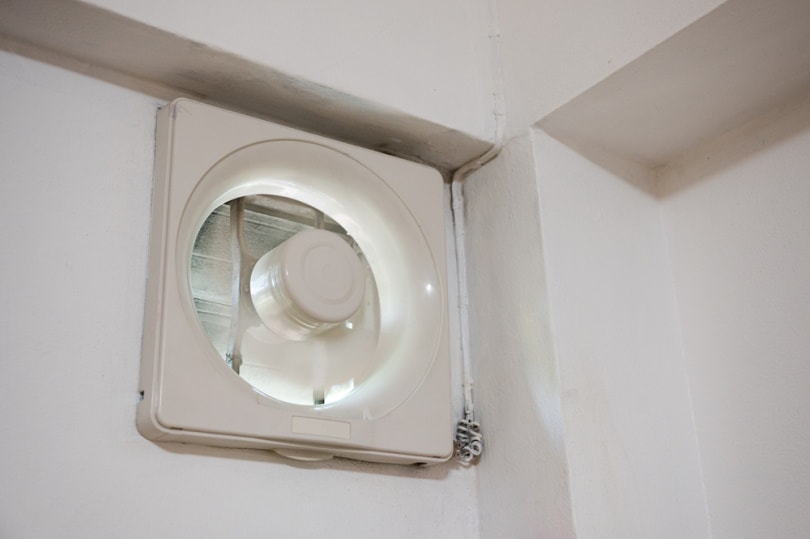
While wall vents are important ventilation house fixtures, they are also vulnerable entry points for pests and other rodents. Squirrels will gladly make their nests in wall vents, creating all sorts of problems, including blocked ventilation shafts.
4. Gable Vents
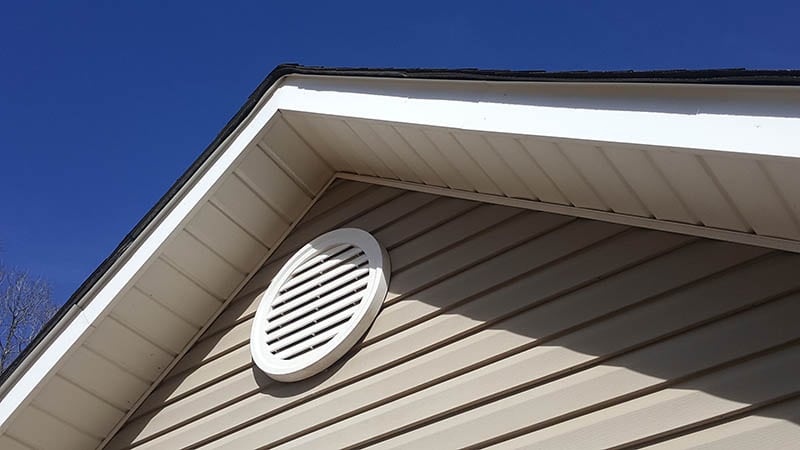
As previously mentioned, ventilation fixtures serve as a weak point where squirrels can get access to your attic. Gable vents help release indoor air and are made up of aluminum, plastic, and wood.
Unfortunately, squirrels are notoriously known to chew on a wide range of materials, including those that make the gable vents. When these rodents are determined to get into your attic, not even the components of gable vents will stop them.
5. Roof Edge
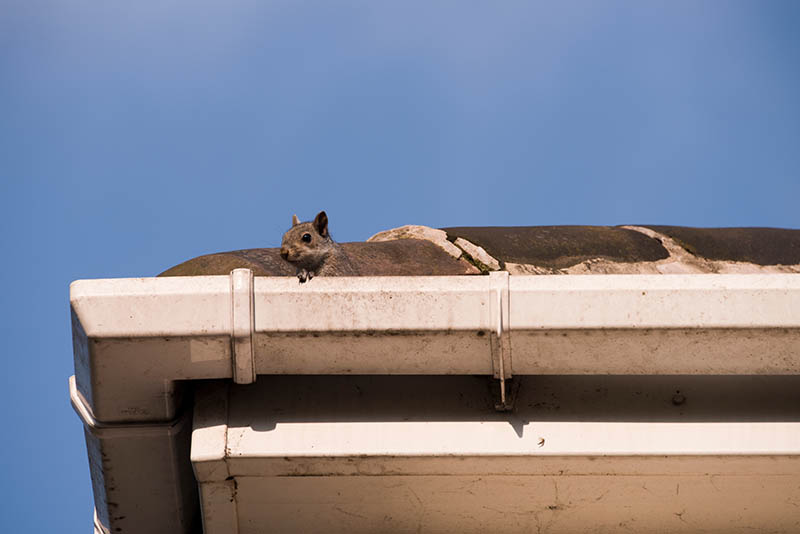
Squirrels can gain entry to your attic through the roof edge. This can be attributed to the fact the materials used under the roof edge tend to deteriorate faster due to exposure to weathering elements. Degraded materials are easier for squirrels to chew on. This gives them faster access to your attic than they would have if the roof edge materials were still intact.
6. Chimneys

This is a pretty obvious entry point for squirrels. If left uncovered or uncapped, a chimney is an ideal place for squirrels and other pests to seek shelter during cold weather. Eventually, they will find their way into the attic, especially if cracks are present on the chimney wall.
7. Plumbing Mats
During the installation of plumbing vents on the roof, sections of the roof must be cut to create wide enough space to work with. These holes must later be patched up using plumbing mats. If the patching job isn’t thorough, squirrels can exploit the weakness to enter the attic. They will constantly chew on the patches and, after a while, chew their way into your attic.
How Can You Tell You Have Squirrels in Your Home?
To determine exactly which type of pest is squatting in your ceiling, there are some signs to look for. Usually, squirrels are the most active during the day, so if you hear commotion sounds from your ceilings at night, then the culprits could be rats or mice.
Now that you know the vulnerable entry points of squirrels, how exactly can you tell that one has made a home in your attic? The first thing you should do is carry out a home inspection, taking note of any potential signs of whether one is or has been living there. Even if you haven’t seen one yet because they are particularly squeamish, jot down what you hear, see and observe. Signs include:
- Foul Odors: Perhaps the most common indicator of squirrels living in your attic is the presence of a small smell. This smell is usually produced by their urine and can spread to your home surroundings. The smell would even be worse if a squirrel crawled into your attic and died there.
- Unusual Noises: As earlier mentioned, squirrels are very noisy creatures. They usually announce their presence as they scurry around your attic mostly in the morning or at dusk.
- Nests in the Attic: Due to the secluded nature of the attic, it is a perfect nesting ground for squirrels. This is evident in houses with a lot of insulation. So, if you find nesting materials such as leaves and debris or your insulation has been chewed on, you are probably playing host to squirrels in your attic.
- Droppings: This is the easiest way to tell if squirrels are living in your attic. If you notice small rounded animal droppings scattered around your attic, then it’s probably time to take immediate action to get rid of them before they incur losses in damages.
- Damage to Property: You can also determine if squirrels are living in your attic from the damage wreaked on your property. Squirrels are notoriously known to chew on any type of material including molding and wiring.
- Arcon Deposits: It is a widely known fact that squirrels love their acorns. They usually gather them during summer for sustenance during winter. So, if you find acorn deposits in your attic, it is a strong indicator that they live there.
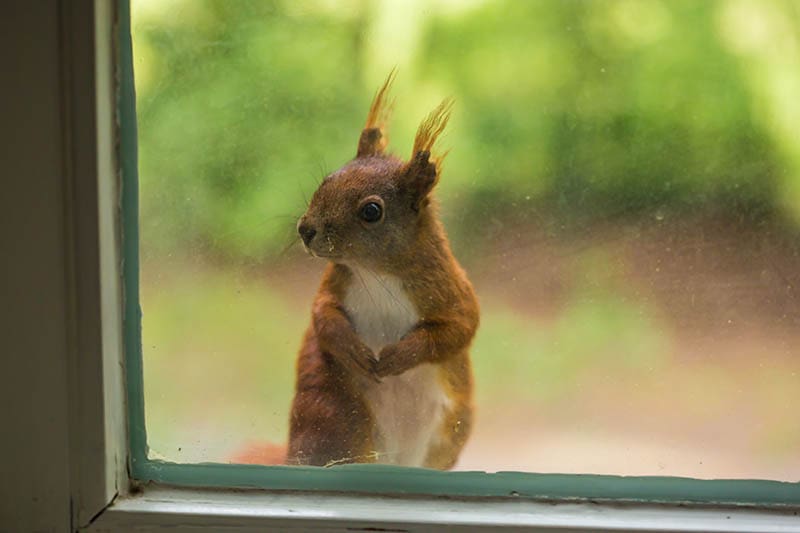
Why and How to Get Rid of Squirrels in the Attic
If Disney’s perception is anything to go by, squirrels are simply cute creatures that are very difficult to get rid of because of their mob mentality. But before you are tempted to give this rodent free reign in your attic, you should know there are dangers associated with allowing a squirrel to live in your house.
One of the biggest concerns is that they tend to chew on wiring subsequently exposing the electrical wire. This increases the risk of a fire hazard in your home.
There are also health implications to having a squirrel in your attic. Besides producing a foul smell, squirrel droppings can be disease carriers. Worse still, the squirrel could die in your attic and risk exposing your household members to viruses brought on by death and decay.
Moreover, when these rodents urinate on your insulation, they may end up destroying it, and replacing insulation is not an easy fit. They can also incur cosmetic damages by chewing on both exterior and interior walls. Sure, squirrels may not physically harm you but the damages they leave behind are very costly to repair and replace.
If you have a squirrel problem in your attic, here are a few methods to get rid of them from your home.
- Use bright lights. If you notice strange noises coming from your attic, consider installing bright lights. Usually, bright lights scare squirrels because it makes them feel vulnerable, prompting them to vacate the area.
- Use chemicals. Though not recommended by environmentalists, you can use chemicals to discourage squirrels from accessing your attic. Soak a rag in any foul-smelling chemical like ammonia and position it next to the nest. The smell will be too uncomfortable for the squirrel to handle, forcing them to vacate. Just ensure the chemical utilized is safe for your household members.
- Use a repellant. In today’s market, you can find several commercially produced squirrel repellents. They are available in natural ingredients or chemical form. Whichever your choice, spray the repellant near areas with squirrel activity to discourage them from coming back.
- Noise deterrent. Since squirrels are naturally weary of larger animals and people, noise can help get rid of them from your attic. Just leave the radio on close to the nest. However, it should not be loud enough to disturb downstairs occupants.
- Set traps. Traps are also a great way of removing squirrels from your attic. You need only place bait in a trap, preferably in a corner because these rodents don’t get into traps in wide open spaces. There are two types of traps that you can use. Those that capture and kill and traps that catch them. In some states, harming squirrels is illegal, so make sure you comply with the regulations of your area before setting up a trap.
If you catch the pesky squirrel alive, release it back into the wild, but make sure you are at least 10 km away from your home. There is, however, a caveat to trapping squirrels. You could end up trapping a mother squirrel, leaving the litter in inaccessible areas of your house. After a while, they will probably die and stink up your home. So, it’s best to wait until they are all in the same place, trap and transport the mom and her litter.
Conclusion
If squirrels have made a home in your attic, you should get rid of them as quickly as possible. If left unchecked, they can damage your home fixtures and expose your family to diseases. Getting rid of squirrels is not as challenging as with other rodents. You just need time, patience, and a little knowledge of where they access your property and how best to rid them of your attic.
Usually, they get into the attic through the roof edge, gable vent, wall vents, soffit, and plumbing mats. You will know they are there from the scuttling noises, acorn deposits, droppings, and chewed-on fixtures. To get rid of them, use noise deterrents, chemicals, repellents, and bright lights. Once they have been eliminated, seal back the holes they used to access your attic. You can also use a reputable pest control service to get back control of your attic.
Featured Image Credit: Amelia Martin, Shutterstock
Contents



